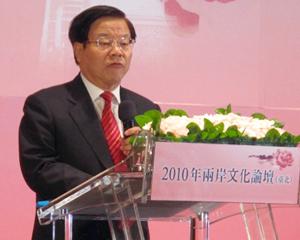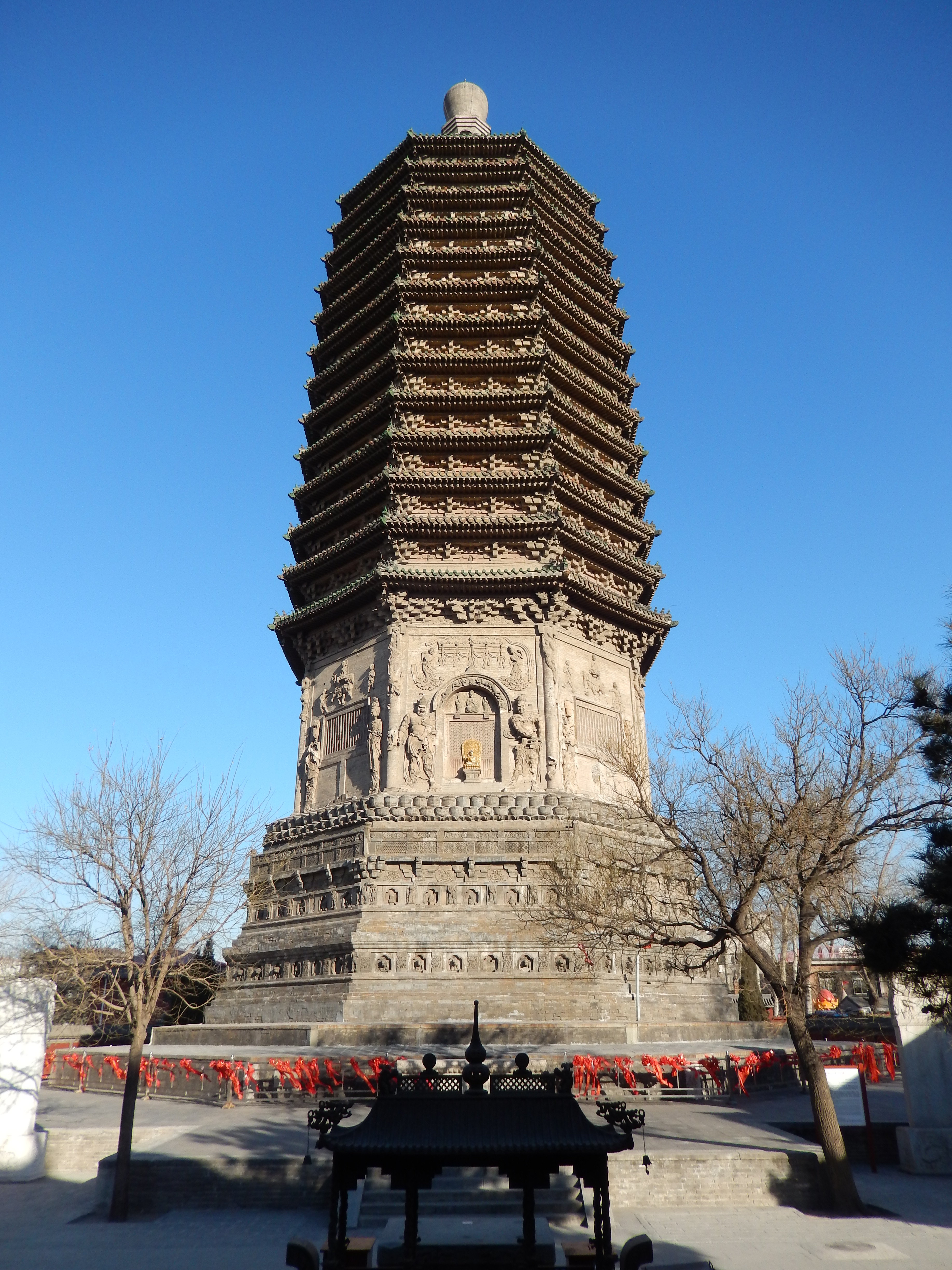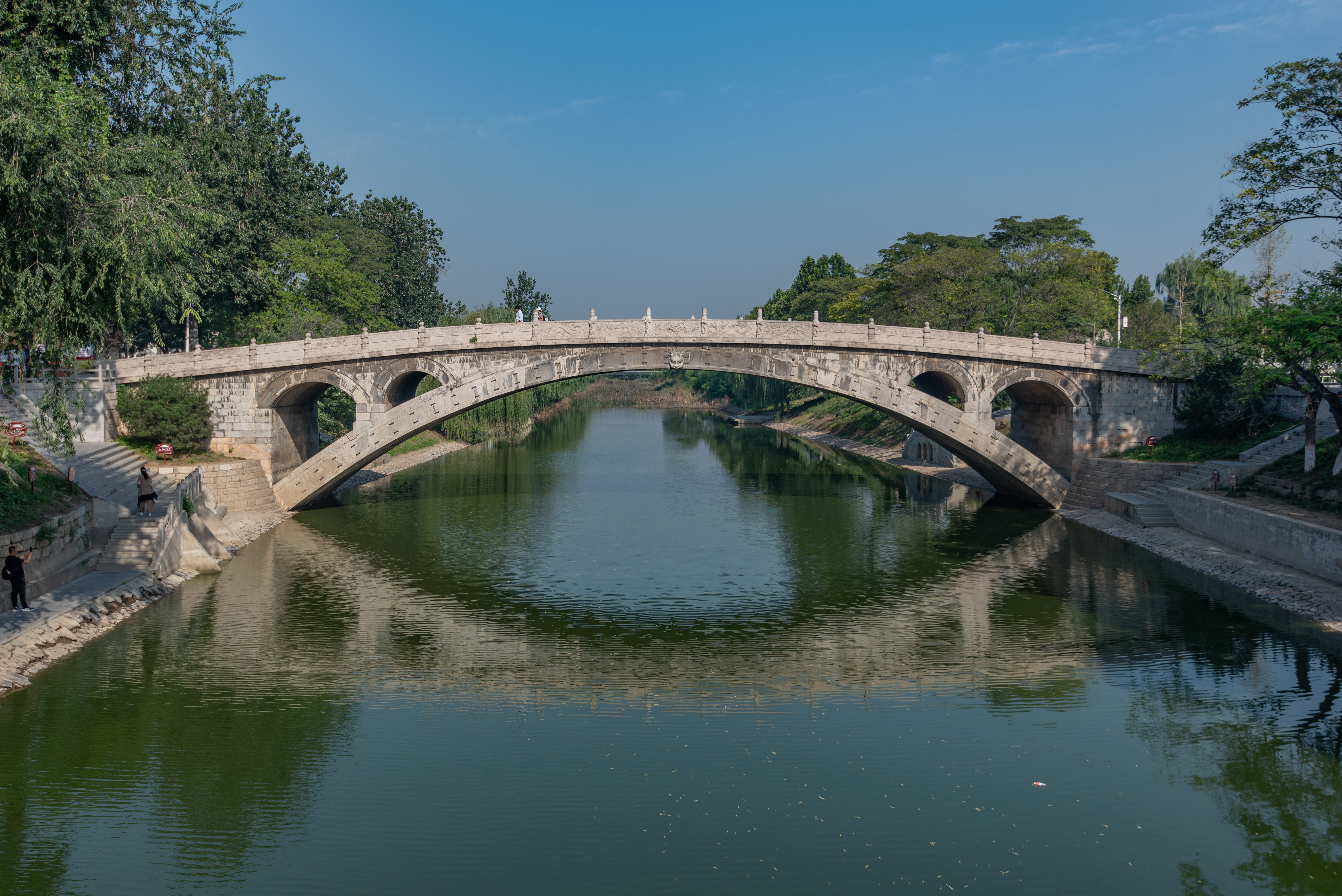|
Anping Bridge
Anping Bridge () is a Song dynasty stone beam bridge in Fujian province. It is long. Fu et al (2002), p. 185 Mao (1978), p. 6 The bridge is also known as the Wuli Bridge (, literally ''Five Li Bridge'') because its length is about 5 '' li'', where a ''li'' is about 500 meters or 0.3 miles. Ministry of Culture of the People's Republic of China (2003) It is a nationally protected historic site registered with the National Cultural Heritage Administration. The bridge lies in the prefecture-level city of Quanzhou, crossing what originally was a tidal estuary of the Shijing River that separates the town of Anhai (in the county-level city of Jinjiang) east of the river, from the town of Shuitou (in the county-level city of Nan'an) west of the river. The bridge is named after Anhai, which was formerly known as Anping. Anping Bridge consists of 331 spans of granite beams resting on top of stone piers, the largest beam weighing 25 tons. The width of the bridge varies from . It origin ... [...More Info...] [...Related Items...] OR: [Wikipedia] [Google] [Baidu] |
Shijing River
The Shijing River () is a small river in Fujian Province of China. The tidal estuary it forms when entering the Weitou Bay of the Taiwan Strait is known as the Anhai Bay (). Most of the Shijing River's basin is within the Prefecture-level city of Quanzhou. Sources The sources of the Shijing River are in the hilly area near the border of Quanzhou's Nan'an City and Xiamen's Xiang'an District. The Shibi Reservoir (石壁水库; dam at ) constructed in 1955-1958 on the upper course of the Daying Stream () (one of the Shijing's tributaries) is used for irrigation and water supply in several towns within the county-level cities of Nan'an and Jinjiang. The reservoir also has a 1 MW hydroelectric plant. The lower course The lower course of the Shijing River, and the Anhai Bay, form the border between Quanzhou's two county-level units: Nan'an City in the west and Jinjiang City in the east. The riverside towns on the west (Nan'an) bank are Shuitou and Shijing, and on the east (Jinj ... [...More Info...] [...Related Items...] OR: [Wikipedia] [Google] [Baidu] |
Shuitou, Nan'an, Fujian
Shuitou () is a town (a township-level division) of Nan'an City, in southern Fujian province, China. Shuitou is located on the western side of the Shijing River and its estuary, the Anhai Bay (). It is connected to its eastern neighbor, the town of Anhai, by the famous ancient five-'' li''-long Anping Bridge, built from large (some almost 10 meters long) slabs of stone. There is also a modern road to Anhai (and on to Jinjiang City and Quanzhou), which has a much shorter bridge over the Shijing, as the estuary has largely silted up over a thousand of years since the old bridge was built. Economy Shuitou, similarly to its southern neighbor, Shijing, has a significant stone-working industry. There is a fair amount of new economic development in town, some of it connected to the trade with Taiwan. Aquaculture is practiced on the Anhai Bay (the estuary of the Shijing River). As of ca. 2001, 138.5 hectares of the bay's mudflats and water surface were used for aquaculture; this i ... [...More Info...] [...Related Items...] OR: [Wikipedia] [Google] [Baidu] |
Bridges In Fujian
A bridge is a structure built to span a physical obstacle (such as a body of water, valley, road, or rail) without blocking the way underneath. It is constructed for the purpose of providing passage over the obstacle, which is usually something that is otherwise difficult or impossible to cross. There are many different designs of bridges, each serving a particular purpose and applicable to different situations. Designs of bridges vary depending on factors such as the function of the bridge, the nature of the terrain where the bridge is constructed and anchored, and the material used to make it, and the funds available to build it. The earliest bridges were likely made with fallen trees and stepping stones. The Neolithic people built boardwalk bridges across marshland. The Arkadiko Bridge (dating from the 13th century BC, in the Peloponnese) is one of the oldest arch bridges still in existence and use. Etymology The ''Oxford English Dictionary'' traces the origin of the wo ... [...More Info...] [...Related Items...] OR: [Wikipedia] [Google] [Baidu] |
Buildings And Structures Completed In 1151
A building, or edifice, is an enclosed structure with a roof and walls standing more or less permanently in one place, such as a house or factory (although there's also portable buildings). Buildings come in a variety of sizes, shapes, and functions, and have been adapted throughout history for a wide number of factors, from building materials available, to weather conditions, land prices, ground conditions, specific uses, prestige, and aesthetic reasons. To better understand the term ''building'' compare the list of nonbuilding structures. Buildings serve several societal needs – primarily as shelter from weather, security, living space, privacy, to store belongings, and to comfortably live and work. A building as a shelter represents a physical division of the human habitat (a place of comfort and safety) and the ''outside'' (a place that at times may be harsh and harmful). Ever since the first cave paintings, buildings have also become objects or canvasses of much artisti ... [...More Info...] [...Related Items...] OR: [Wikipedia] [Google] [Baidu] |
Tongji University
Tongji University () is a comprehensive public research university located in Shanghai. Established in 1907 by the German government together with German physicians in Shanghai, Tongji is one of the longest-standing, most selective, and most prestigious universities in China under the Project 985 and Double First Class University Plan. It is a Chinese state Class A Double First Class University. Tongji University is renowned for its engineering, architecture and business programs. The university possesses a faculty of more than 2,803 scholars, including 27 members from the Chinese Academy of Sciences and the Chinese Academy of Engineering. Currently, Tongji University owns 29 colleges, 8 affiliated hospitals, and 6 affiliated primary and secondary schools. Tongji University consistently features in the top 300th global universities. The U.S. News & World Report Best Global University Ranking ranks Tongji University at 15th worldwide in engineering. The College of Civil Eng ... [...More Info...] [...Related Items...] OR: [Wikipedia] [Google] [Baidu] |
Ministry Of Culture Of The People's Republic Of China
The Ministry of Culture (MOC) was a ministry of the government of the People's Republic of China which was dissolved on 19 March 2018. The responsibilities of the MOC, which were assumed by the Ministry of Culture and Tourism, encompassed cultural policy and activities in the country, including managing national museums and monuments; promoting and protecting the arts (including censorship of visual, folk, theatrical, musical, dance, architectural, literary, televisual and cinematographic works); and managing the national archives and regional culture centers. Its headquarters were in Chaoyang District, Beijing. Duties The duty of the ministry was to digitize and preserve public domain works, and make them available and accessible to every citizen. China had millions of public domain works, including but not limited to books, pictures, music and films. List of ministers See also * China Arts and Entertainment Group * Ministries of the People's Republic of China Re ... [...More Info...] [...Related Items...] OR: [Wikipedia] [Google] [Baidu] |
Beijing
} Beijing ( ; ; ), alternatively romanized as Peking ( ), is the capital of the People's Republic of China. It is the center of power and development of the country. Beijing is the world's most populous national capital city, with over 21 million residents. It has an administrative area of , the third in the country after Guangzhou and Shanghai. It is located in Northern China, and is governed as a municipality under the direct administration of the State Council with 16 urban, suburban, and rural districts.Figures based on 2006 statistics published in 2007 National Statistical Yearbook of China and available online at archive. Retrieved 21 April 2009. Beijing is mostly surrounded by Hebei Province with the exception of neighboring Tianjin to the southeast; together, the three divisions form the Jingjinji megalopolis and the national capital region of China. Beijing is a global city and one of the world's leading centres for culture, diplomacy, politics, financ ... [...More Info...] [...Related Items...] OR: [Wikipedia] [Google] [Baidu] |
Yale University Press
Yale University Press is the university press of Yale University. It was founded in 1908 by George Parmly Day, and became an official department of Yale University in 1961, but it remains financially and operationally autonomous. , Yale University Press publishes approximately 300 new hardcover and 150 new paperback books annually and has a backlist of about 5,000 books in print. Its books have won five National Book Awards, two National Book Critics Circle Awards and eight Pulitzer Prize The Pulitzer Prize () is an award for achievements in newspaper, magazine, online journalism, literature, and musical composition within the United States. It was established in 1917 by provisions in the will of Joseph Pulitzer, who had made h ...s. The press maintains offices in New Haven, Connecticut and London, England. Yale is the only American university press with a full-scale publishing operation in Europe. It was a co-founder of the distributor TriLiteral LLC with MIT Press ... [...More Info...] [...Related Items...] OR: [Wikipedia] [Google] [Baidu] |
List Of Bridges In China
This list of bridges in China includes notable bridges. China has a long history in bridge construction. The oldest bridge still in existence in China is the Anji Bridge, constructed during the years between 595 and 605. During the infrastructure boom of the past two decades, bridge-building has proceeded at a rapid pace on a vast scale. Prior to the completion of the Wuhan Yangtze River Bridge in 1957, there were no bridges across the Yangtze River, China's longest, from Yibin to Shanghai, and all overland roads and railways crossing this 2,884 km (1,792 mi.) stretch of the river had to be ferried. There were only seven such bridges in 1992, but that number reached 73 by the end of 2012, including eight new openings in that year alone. China has been pushing the boundaries of bridge construction with many record breaking bridges, including: * The Danyang–Kunshan Grand Bridge, the world's longest bridge measuring over . * The Yangsigang Yangtze River Bridge in ... [...More Info...] [...Related Items...] OR: [Wikipedia] [Google] [Baidu] |
Tianxia
''Tianxia'' (), literally meaning "(all) under Heaven", is a Chinese term for a historical Chinese cultural concept that denoted either the entire geographical world or the metaphysical realm of mortals, and later became associated with political sovereignty. In ancient China and imperial China, ''tianxia'' denoted the lands, space, and area divinely appointed to the Chinese sovereign by universal and well-defined principles of order. The center of this land was directly apportioned to the Chinese court, forming the center of a world view that centered on the Chinese court and went concentrically outward to major and minor officials and then the common subjects, tributary states, and finally ending with fringe "barbarians". The center of this world view was not exclusionary in nature, and outer groups, such as ethnic minorities and foreign people, who accepted the mandate of the Chinese Emperor were themselves received and included into the Chinese ''tianxia''. In classic ... [...More Info...] [...Related Items...] OR: [Wikipedia] [Google] [Baidu] |
Tongji
Tongji may refer to: *Tongji Bridge (Jinhua) () a large stone arch bridge in Jinhua, China. *Tongji Bridge (Yuyao) () a stone arch bridge in Yuyao, China. *Tongji County (), former name of Shifang, Sichuan, China. * Tongji Lu Station () metro station in Foshan, China. *Tongji Medical College () in Wuhan, China. *Tongji University (), a university in Shanghai, China. * Tongji University Station (), a metro in Shanghai Shanghai (; , , Standard Mandarin pronunciation: ) is one of the four direct-administered municipalities of the People's Republic of China (PRC). The city is located on the southern estuary of the Yangtze River, with the Huangpu River flowin ..., China. * Tongji (), a form of Chinese shaman or oracle {{disambig ... [...More Info...] [...Related Items...] OR: [Wikipedia] [Google] [Baidu] |
Zhang (unit)
Zhang may refer to: Chinese culture, etc. * Zhang (surname) (張/张), common Chinese surname ** Zhang (surname 章), a rarer Chinese surname * Zhang County (漳县), of Dingxi, Gansu * Zhang River (漳河), a river flowing mainly in Henan Henan (; or ; ; alternatively Honan) is a landlocked province of China, in the central part of the country. Henan is often referred to as Zhongyuan or Zhongzhou (), which literally means "central plain" or "midland", although the name is al ... * ''Zhang'' (unit) (丈), a traditional Chinese unit of length equal to 10 ''chi'' (3–3.7 m) * Zhang Zetian, Chinese billionaire * 璋, a type of shaped stone or jade object in ancient Chinese culture thought to hold great value and protective properties; see also Bi (jade) and Cong (jade) Other * Zhang, the proper name of the star Upsilon¹ Hydrae See also * Zang (other) {{disambiguation, geo ... [...More Info...] [...Related Items...] OR: [Wikipedia] [Google] [Baidu] |






